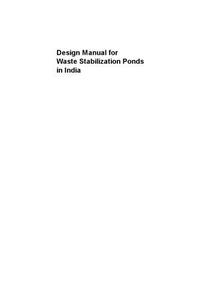
Free Download Design Manual For Waste Stabilisation Ponds In India By Duncan Mara
1997 | 125 Pages | ISBN: 0951986910 | PDF | 2 MB
Waste stabilization ponds are an extremely appropriate method of wastewater treatment in India, and I hope that this Manual will serve to promote modern pond design in the country. Of course design by itself is not enough: operation and maintenance are crucial, but fortunately with ponds this is simple and does not require skilled labour. Guidance is also given on pond monitoring and evaluation, and this can lead to improved design - there is no substitute for local data. Sometimes, because of more rigorous legislation or neglect, pond systems need upgrading or rehabilitation, and this is also discussed. In many developing countries, and India is no exception, wastewater is generally too valuable to waste, and the reuse of pond effluents for crop irrigation or for fish culture is very important in the provision of high quality food. In arid zones, the use of wastewater storage and treatment reservoirs is advantageous as it permits the whole year's wastewater to be used for irrigation, thus enabling the irrigation of a much larger area and the consequent production of much more food. This manual has been wholly financed by the Department for International Development of the United Kingdom Government as part of its bilateral aid programme with the Government of India. During its preparation many people in India have provided help. I am especially grateful to Mr R P Sharma of the National River Conservation Directorate; Mr Ian Curtis of the DFID Water and Sanitation Office in New Delhi; Dr Dhrubajyoti Ghosh of the Calcutta Metropolitan Water and Sanitation Authority; Dr S N Kaul of the National Environmental Engineering Research Institute, Nagpur; and Mrs Shanta Sheela Nair and her staff at MetroWater, Chennai.
